Russell Dauterman on the Magic and Majesty of Crafting “Thor”
The "Thor" artist takes us behind the scenes of his work and how he crafts the hit Marvel title
Following up on a run like Esad Ribic’s one on “Thor: God of Thunder” is an impossible task for an artist. You have to be compared to that? To the guy that helped Jason Aaron bring one of the greatest Thor stories ever to life in “The God Butcher” and “Godbomb”? That’s a tall order, but it was the one Russell Dauterman – a relative neophyte to the industry – was faced with. What could an artist do to live up his predecessor’s work?
Well, he could what Dauterman did, which is approach the world from a different angle but one that is every bit as breathtaking as Ribic’s in its own way.
For those who had never experienced his work, it was a quick transition to being a fan. Really, all you have to do to realize that Dauterman isn’t just one of the best new artists in comics, but one of the best overall, is see his work. He’s done magnificent, majestic things in his run on “Thor” with writer Jason Aaron and colorist Matt Wilson, and he’s helped make Jane Foster’s Thor every bit the hero we’ve come to expect out of the name (and even more so in some cases). I reached out to Dauterman to talk to him about his work, his experience bringing the book to life, his approach to art, and much more, and it’s a pretty interesting look into the mind of a true up-and-coming star. Take a look below, and thanks to Dauterman for the conversation and for sharing process art for the piece.
Enjoy his work? Check out his website and his Tumblr. They’ll be great avenues to follow along his career and art as it progresses.
Before we get into Thor, how did you make your way into being a comic artist? Was it something that you always wanted to do, and if so, what was the allure to you?
RD: I’ve been drawing for as far back as I can remember. I knew I wanted to do something with art for a career ever since people started asking me what I wanted to be when I grew up, but I wasn’t sure exactly what that would be.
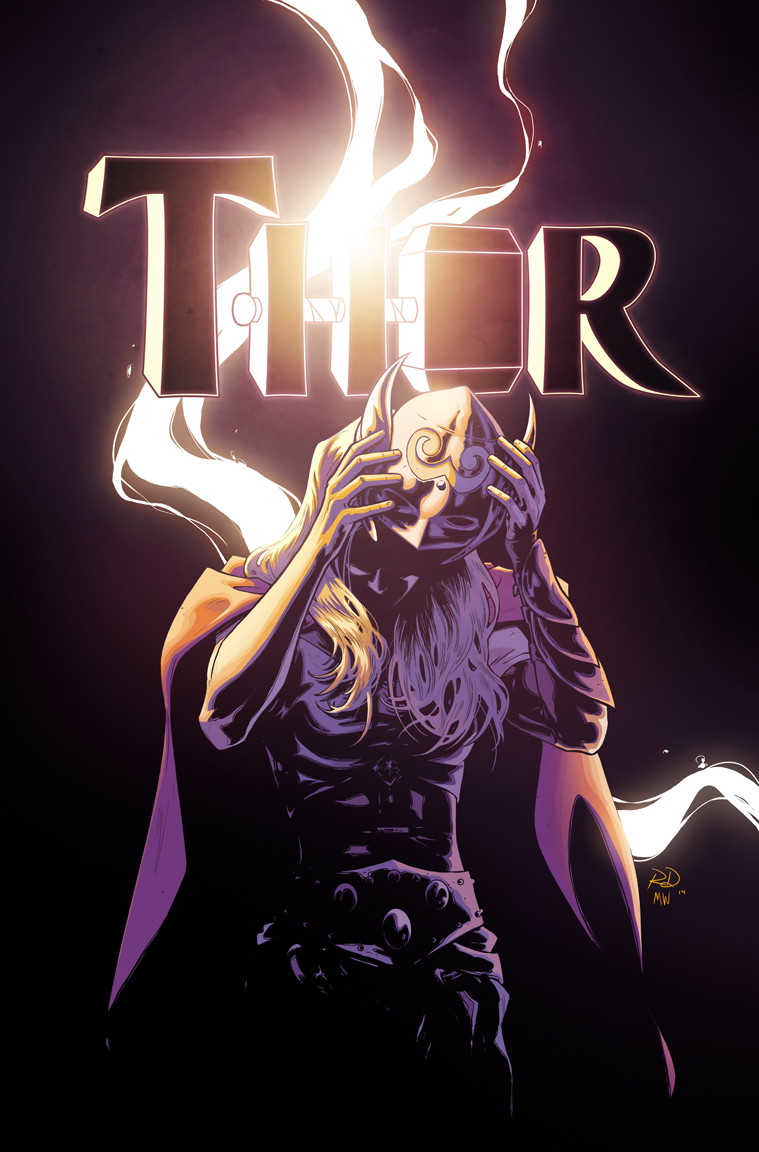
I got into comics through an obsession with the 90s X-Men animated series, and to a lesser extent Batman: The Animated Series, and comics quickly became something I was passionate about. I was crazy about the characters – Rogue! Storm! – and loved escaping into those fantasy worlds. Now I really appreciate comics as a medium that celebrates illustration and illustrated storytelling.
I actually interned at Marvel in college and was too shy to even mention that I wanted to draw comics until my internship was ending. Pretty stupid, I know! I got some encouraging feedback though.
I kept working on comics and trying to improve, but also veered off into other areas I was interested in – I did costume and character design stuff for awhile, and some children’s book work. But, I kept coming back to comics. Once I decided to pursue comics as a career, I did research, tried to find as much comics-making and portfolio advice that I could, and prepared a portfolio for that year’s San Diego Comic Con.
I did every review I could at that convention and dropped off portfolios with every publisher. One of the reviews I had was with Marvel, with editor Nick Lowe. About 4 years later, Nick hired me to draw CYCLOPS.
In between that review and getting hired there was a lot of improvement that needed to happen, a lot of sample pages, and some small or unpaid gigs. My first break was thanks to Bryce Carlson at BOOM!, who hired me for the SUPURBIA series. I did that for a couple years, started putting more work online, and going to cons. Things took off from there.
As you first started drawing, who or what were your biggest influences, and how have those influences changed as your career has moved along?
RD: Disney, He-Man, and those animated series I mentioned before were really big influences for me. I was also pretty obsessed with Chris Bachalo as a kid. Generation X was totally my jam. I even have a Gen X promo poster that he drew framed in my office. Frank Quitely is another huge influence – his work is just the best and I admire his career.
All that stuff is still influential, but I’m looking at more non-comics stuff now too – photography, nature, cinematography, vintage illustration. JC Leyendecker is a favorite.
Every artist works differently, especially today with digital tools changing the game for many artists. What’s your process like, from receiving the script to your final touches, and what tools do you use to do that?
RD: I’m all digital. I made that switch before the second volume of SUPURBIA and it opened my work up a ton. I tinker and fiddle a lot, so being able to easily redo things or move something over or rearrange a composition is invaluable.
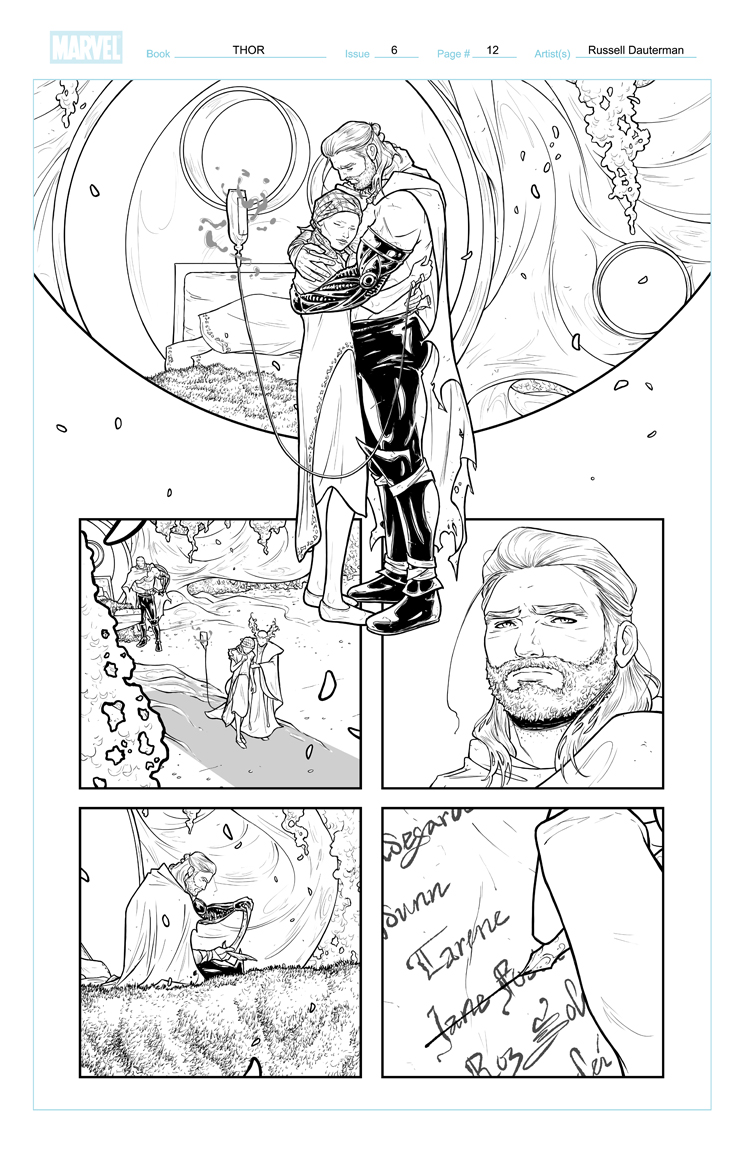 I start by reading the script and making notes, and then doodling my first thoughts onto a page template. From there I figure out what shape the panels should be in, and then start refining camera angles and figure size and all that – trying to find a good, working composition. Once I have a layout that I like, that gets sent to my editors and the writer for approval, and then I start the finished drawing. The layout is generally very rough, so the next step is a tighter drawing that figures out proper perspective and body proportions and such.
I start by reading the script and making notes, and then doodling my first thoughts onto a page template. From there I figure out what shape the panels should be in, and then start refining camera angles and figure size and all that – trying to find a good, working composition. Once I have a layout that I like, that gets sent to my editors and the writer for approval, and then I start the finished drawing. The layout is generally very rough, so the next step is a tighter drawing that figures out proper perspective and body proportions and such.
I do all of that stuff with a Wacom tablet. The last step is the final drawing, which is done on a Cintiq – I have better control for line quality that way.
Let’s get this one out of the way early: Jane Foster’s Thor is a new take on the character, but one that has been pretty spectacular so far with her own advantages from the Thor we’ve known in the past. As an artist, what is it about this version of the character that you find particularly appealing?
RD: Well, just the concept of a female Thor was incredibly exciting to me. My favorite characters in any media have always been the strong, female characters. Marvel seems very conscious of diversity and representation with books like THOR, which is super great. Seeing yourself represented in the things you love is really important, especially if you’re someone who so often isn’t represented.
Now that Thor’s been revealed as Jane, there’s a whole other level to that. It’s a story about being worthy and being a hero against bad odds. I’ve been really thrilled to be a part of telling that story.
From the art side, I love the dichotomy between Thor’s and Jane’s appearances. When Jane is Thor, she’s tall and muscular, with a confident stance. When Jane is untransformed, she’s weighed down by her illness, slouched, small. But she’s still just as big a hero. Finding visual ways to have that show through has been exciting for me.
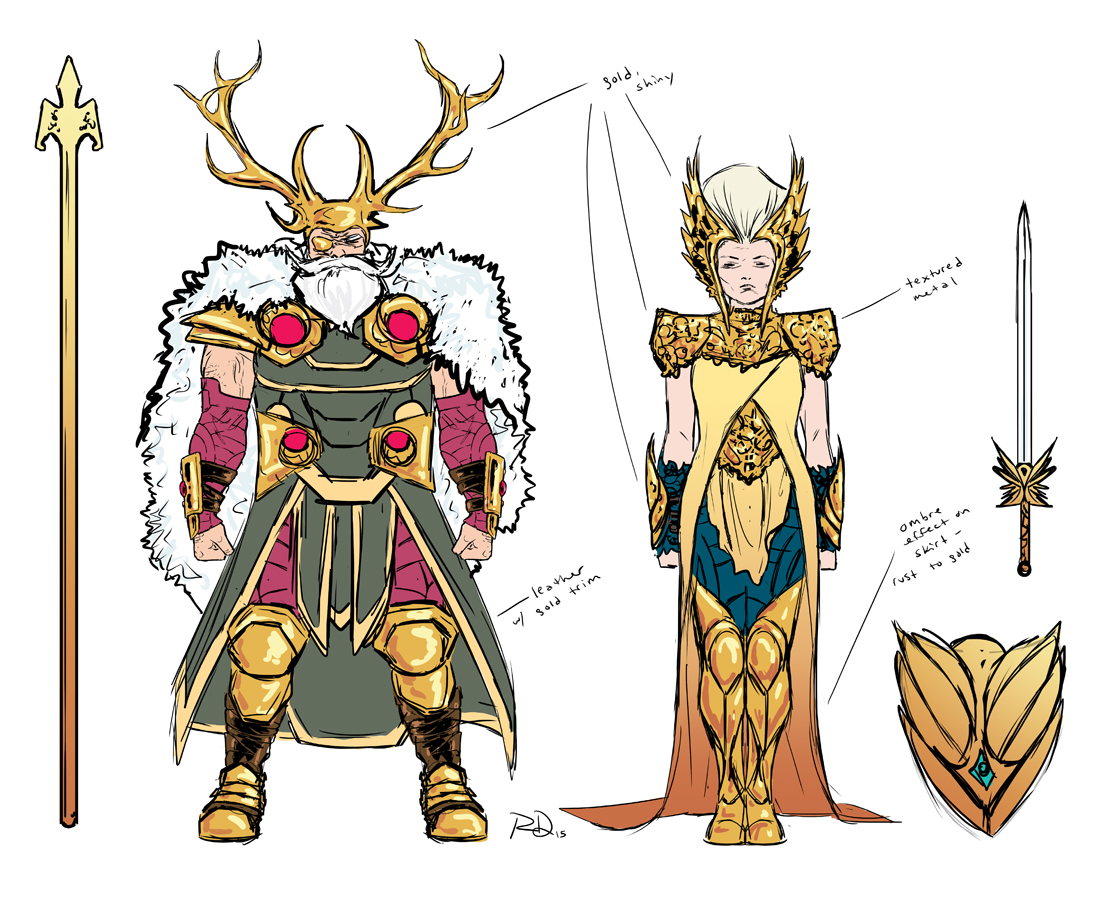
Jason Aaron’s an incredible writer for us readers, but as an artist, what is it like working with him? Are there things about his scripts or his writing that really make a difference in bringing the story to life for you?
RD: He’s incredible for us artists too! I love working with Jason. I was crazy intimidated when I got the assignment since he’s such a big name and I was basically coming on to this book out of nowhere. But he’s been very supportive.
His scripts are so well written, and I love his storytelling sensibilities – how he paces things and the restraint he has in terms of what he puts on each page. His scripts are detailed and thoughtful, with the right amount of description and leeway.
I’ve been very lucky and thrilled to work with him.
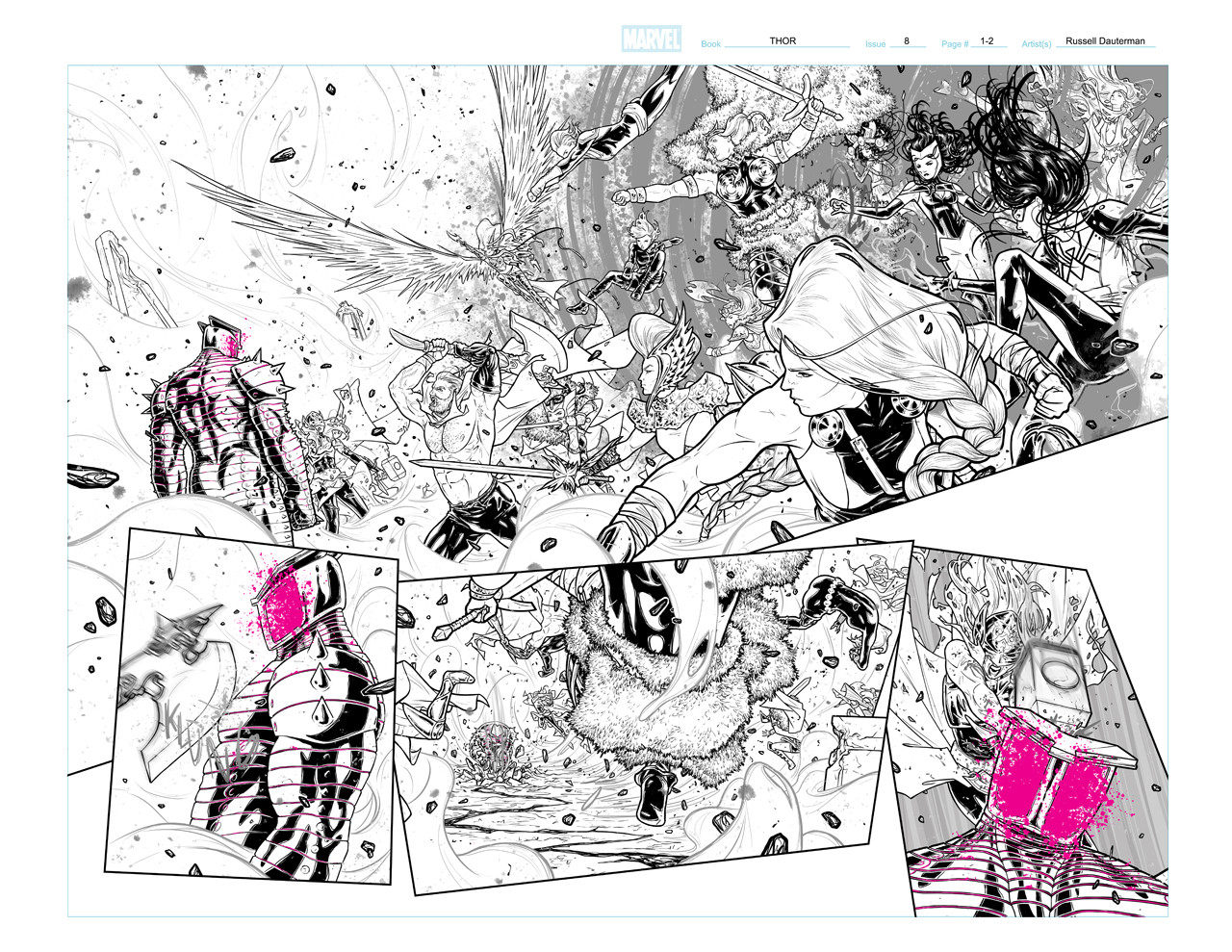 One of the things I hear from artists pretty regularly is how easy something like writing “Odinson and a cadre of badass women show up to support Thor against The Destroyer” is, but how hard it is to actually draw. Yet you’ve been tasked with doing some rather bombastic and action packed sequences already, and an almost palpable positive energy comes off the page, especially in that bananas fight in #8. Do you particularly enjoy working on those big moments? Also, was there something about that fight in #8 that appealed to you in particular? It has to be pretty damn cool as someone who simply enjoys comics to work with so many exciting characters in one scene.
One of the things I hear from artists pretty regularly is how easy something like writing “Odinson and a cadre of badass women show up to support Thor against The Destroyer” is, but how hard it is to actually draw. Yet you’ve been tasked with doing some rather bombastic and action packed sequences already, and an almost palpable positive energy comes off the page, especially in that bananas fight in #8. Do you particularly enjoy working on those big moments? Also, was there something about that fight in #8 that appealed to you in particular? It has to be pretty damn cool as someone who simply enjoys comics to work with so many exciting characters in one scene.
RD: Oh yeah, I love those big moments! I do really love doing the quiet scenes, but there’s something very rewarding about looking at a big double-page spread or splashy page when it’s finished. Ask me while I’m drawing them and I’ll probably give you a more stressed-out answer! Haha
I could not have been more excited to draw the big fight in #8. Thor, Scarlet Witch, Karnilla, all those badass women, and the Odinson? So, so excited to draw them! I did that cover for #6 months before, with all the candidates for Thor’s secret identity, and thought that was my big chance to draw all of those amazing women. I was very happily surprised when I read the script for #7 and saw that those ladies would be making up Thor’s cavalry.
And thanks! I’m glad the energy is showing through.
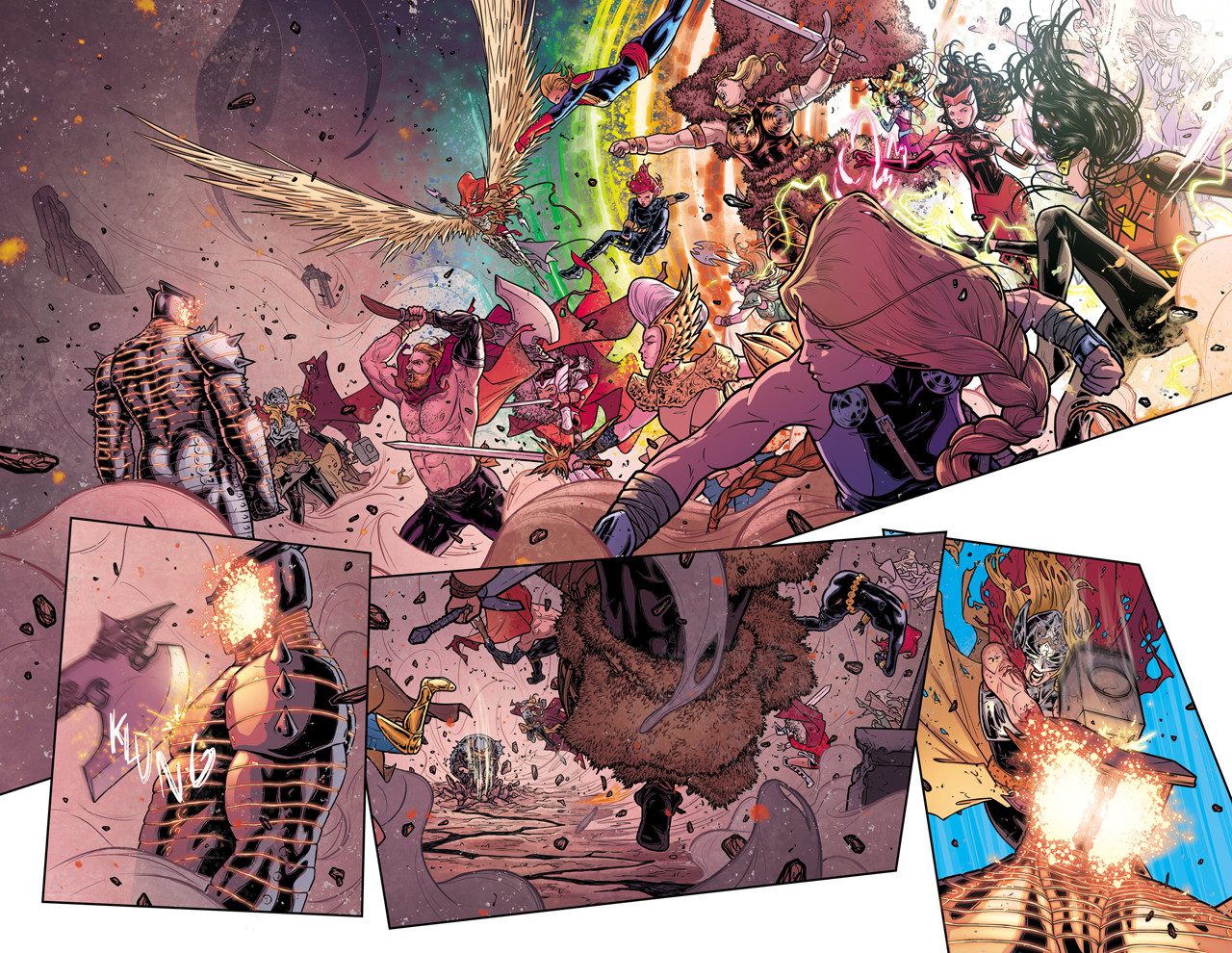 It always seems to me that a lot of what it takes to be an effective artist is the ability to problem solve, with the central problem being, “how do I make this story work visually?” When it comes to “Thor” and some of its magnificent pages, both in terms of big and small moments, what do you think are the keys to making a page really work? Are there key elements you boil each page down to on any project you work on?
It always seems to me that a lot of what it takes to be an effective artist is the ability to problem solve, with the central problem being, “how do I make this story work visually?” When it comes to “Thor” and some of its magnificent pages, both in terms of big and small moments, what do you think are the keys to making a page really work? Are there key elements you boil each page down to on any project you work on?
RD: That’s definitely the hardest part – trying to figure out the composition and camera angles. I think for THOR, or any comic really, the key to making it work is to find what’s most important about each page and to build the visual around that. Which moment is the most important? And how do you lead up to or transition out of that moment? What visual cues can help emphasize the emotion or action that’s going on?
The great – and now Eisner nominated! – Matt Wilson is your colorist on this project, and as per usual, he does stellar work. What is it about Matt’s colors that you think helps bring the best out of your linework, and how closely do the two of you work together on the book?
RD: Matt’s fantastic! I’m always excited to see what he does with every page. A lot of times pages and covers come back where he’ll have done something I never would’ve expected, and it works so well. His palettes are beautiful and he’s really great at telling a story through color. He brings so much to the book.
I think we work really well together – our sensibilities match up. And I’d say we work pretty closely. We talk and I’ll mention any specific lighting or design things I have in mind, but that color magic is all him. From a technical standpoint, we’ve worked out how to tag team the effects so that I’ll draw something, like the lightning or magic powers, and set up the file in such a way that he can work with the effect and really make it pop.
I love working with him and hope we get to do a lot more work together. Same for the rest of the THOR team – it’s been a dream team for me.
One of my favorite random things about your art in “Thor” are the sound effects. You can always tell when someone enjoys their sound effects, and it’s pretty clear you are one of them. But a lot of people forget that “Thor” is almost a legacy title in that regard, as Walt Simonson’s “DOOM” and other effects are about as famous as any in comics. Are those sound effects a nod to those before you, or is that something you just really love to do in your work?
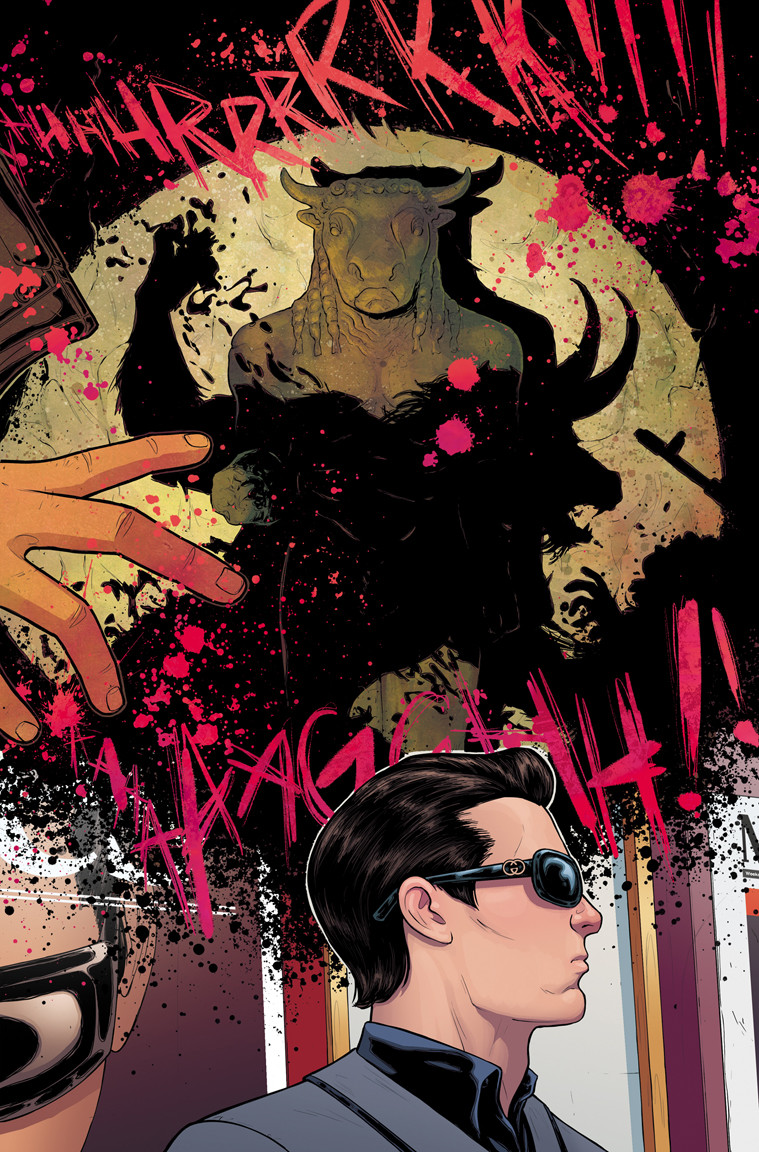 RD: The sound effects are definitely a nod to Thor’s history. I’d dabbled in drawing in sound effects a couple times previously, but felt compelled to draw in the effects myself for THOR because of how important they’ve been to the book. Like you said, those Walt Simonson effects are incredible, and I loved how Esad Ribic incorporated them into his run.
RD: The sound effects are definitely a nod to Thor’s history. I’d dabbled in drawing in sound effects a couple times previously, but felt compelled to draw in the effects myself for THOR because of how important they’ve been to the book. Like you said, those Walt Simonson effects are incredible, and I loved how Esad Ribic incorporated them into his run.
Now the sound effects are something I think I’ll continue doing moving forward – I love drawing them. They can really help accent the action or help the flow of a page or balance a composition.
We did a flashback scene in #6 where Matt and I did some trippier art things than we usually do. I drew the sound effect in that scene with blood splatters – I’d like to work in more effects like that.
For me, the previous volume of this book that featured Esad Ribic on art was one of the great Thor runs of all time. It was a killer run, but the book hasn’t missed a beat at all with your art. Did you feel any pressure following Esad up on the book, especially with the added attention brought by the new identity for the character?
RD: Yeah, of course. Jason and Esad’s Thor run is one of my favorite books from the past few years – I was such a fan of it, and Esad’s work is breathtaking. Take that, add in all the media attention, and the fact that I’d only drawn 5 comics for the Big Two before getting the job… Yeah, I felt a lot of pressure.
But I tried not to think about that and just tried to do my own thing with the art. And I liked that the new Thor was the focus.
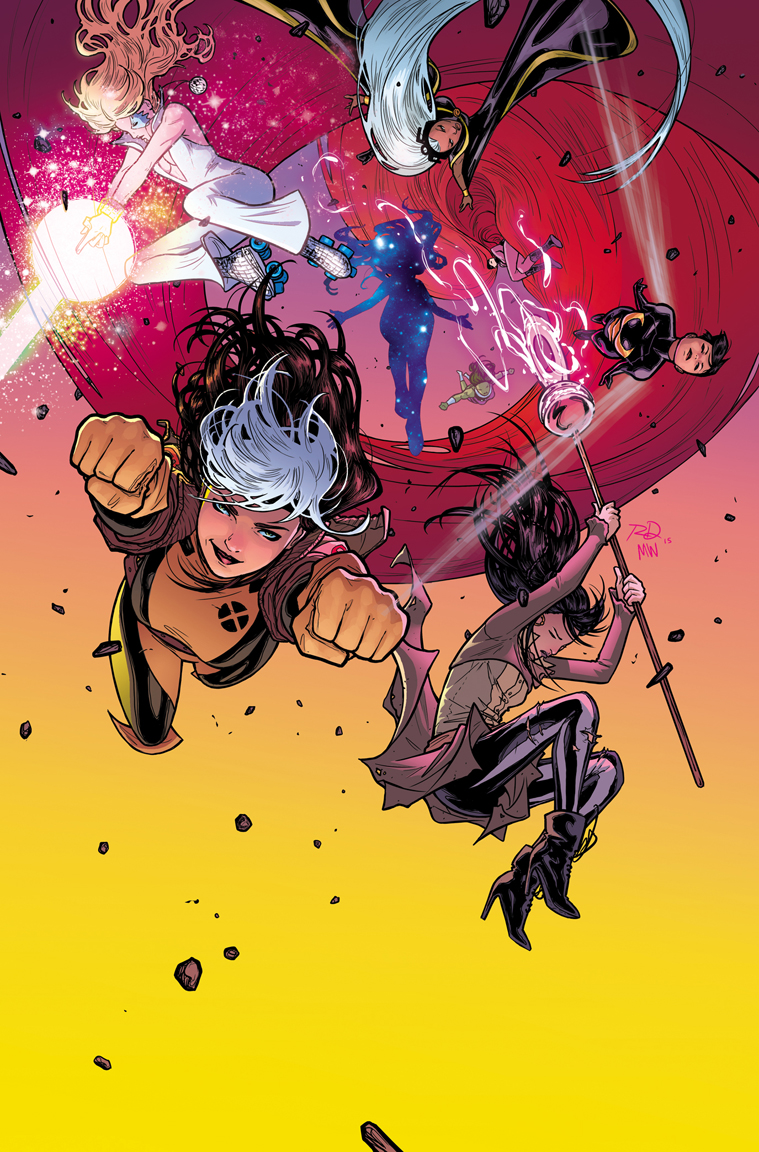 You’ve really only been in comics for a few years, and it’s been a hell of a rise to fame, but I’m sure even you’ve had pitfalls along the way. Looking back to your early days as an artist, what would today’s Russell Dauterman tell the fresh to comics version of yourself if given the chance?
You’ve really only been in comics for a few years, and it’s been a hell of a rise to fame, but I’m sure even you’ve had pitfalls along the way. Looking back to your early days as an artist, what would today’s Russell Dauterman tell the fresh to comics version of yourself if given the chance?
RD: I would tell myself to calm down. Haha
I think what matters most is doing good work and constantly trying to do better work, and doing what you can to get that work seen. I tried to do all those things, but if I were doing it over again I would try to lower my expectations too.
This was very naïve, but I think I was expecting to get hired overnight after that first portfolio review. Looking back now, I can see how quickly things happened after that, but at the time, I felt very nervous and discouraged.
One of the tips I’ve held onto from CB Cebulski was to “be professional, be persistent, and be patient.” I would tell myself to remember that and to stop worrying so much.
All line art is by Dauterman, with colors on all of the pieces (besides the Freyja/Odin character sheets) by Matt Wilson. The pieces are from, in order top to bottom, Thor #8, Thor #6, character sheets, Thor #8, Thor #6 and A-Force #1.
